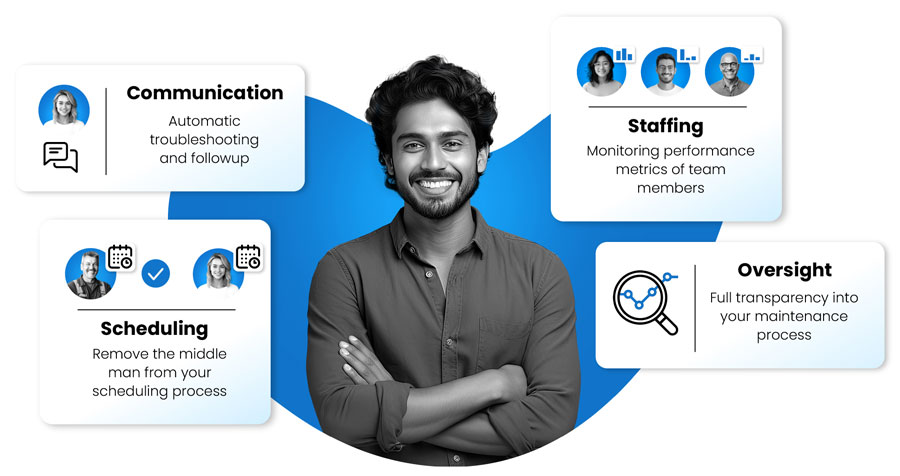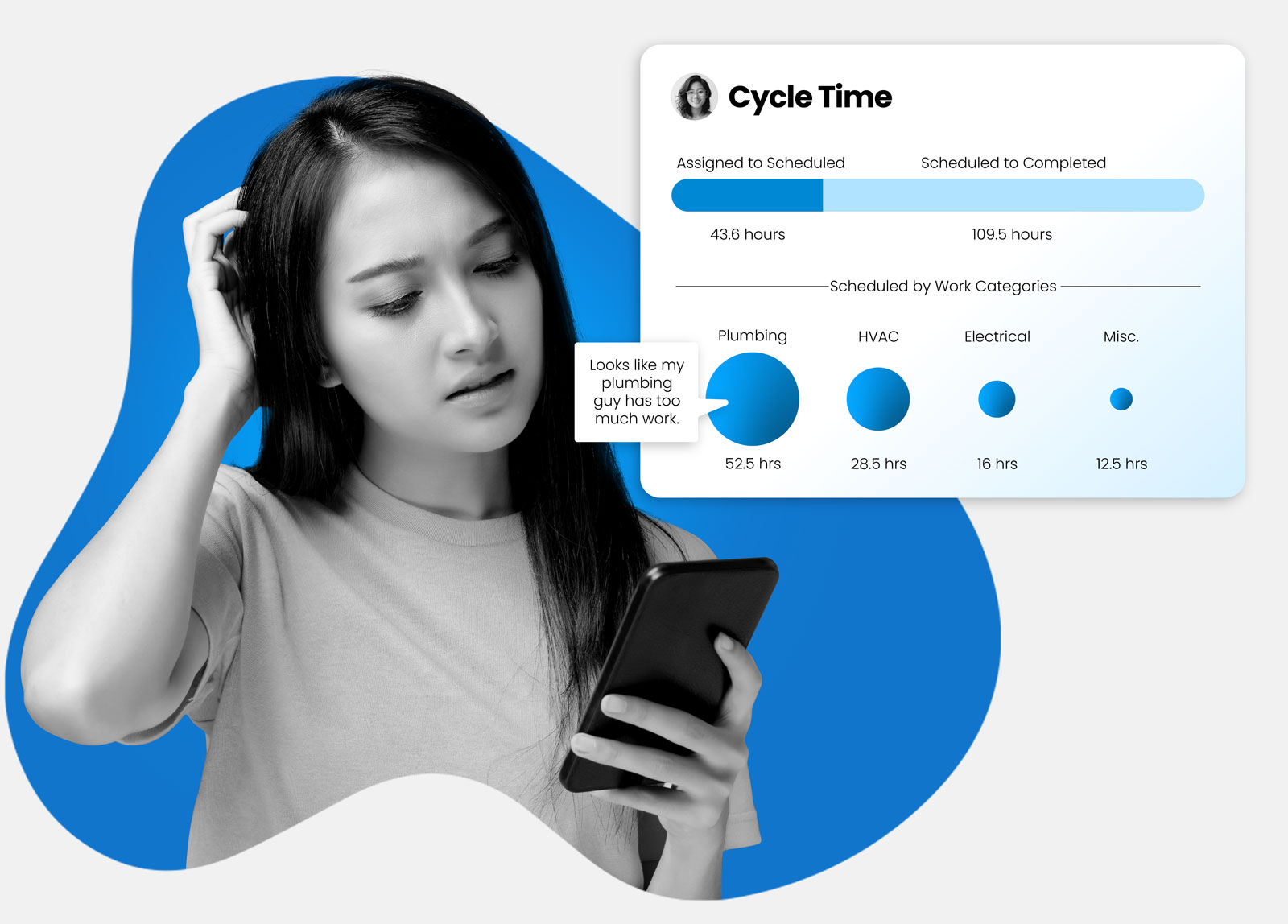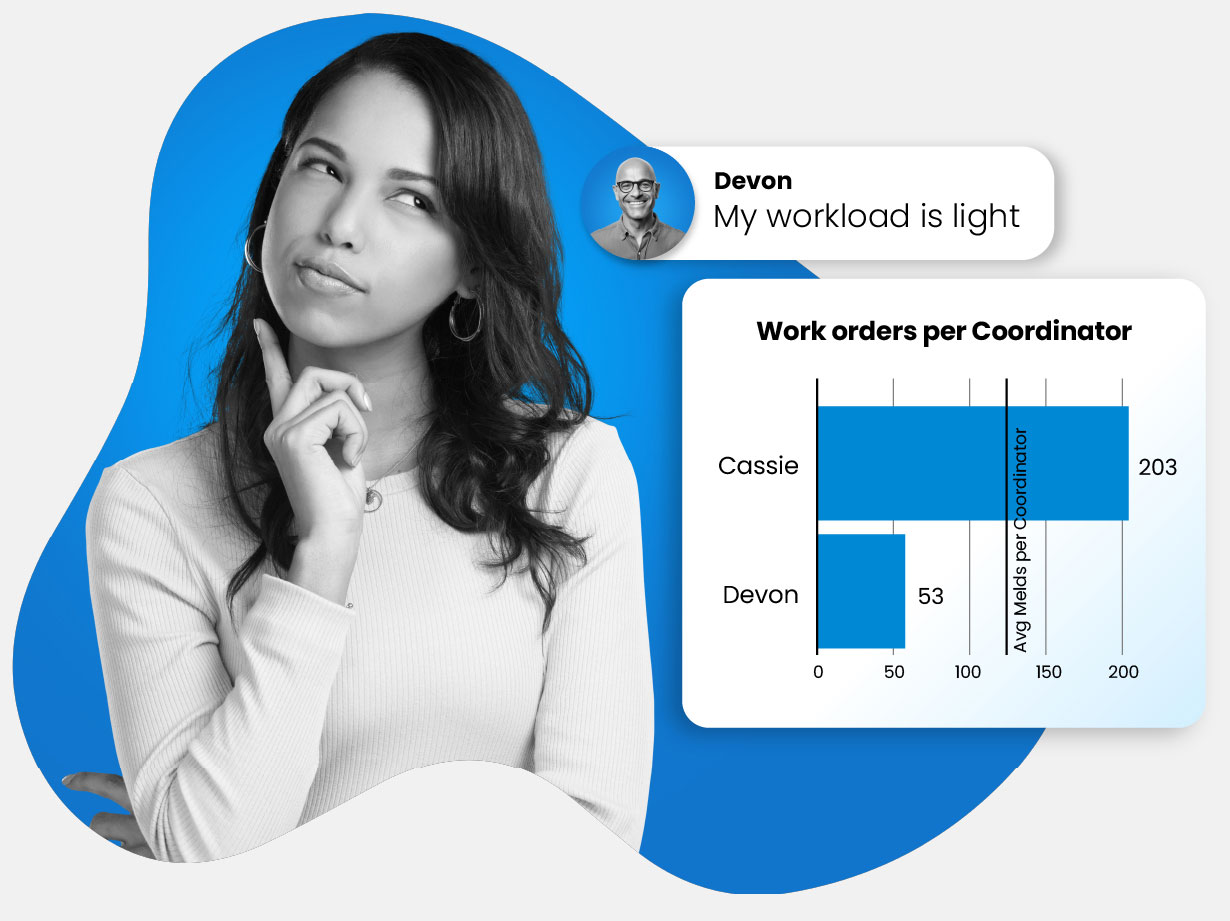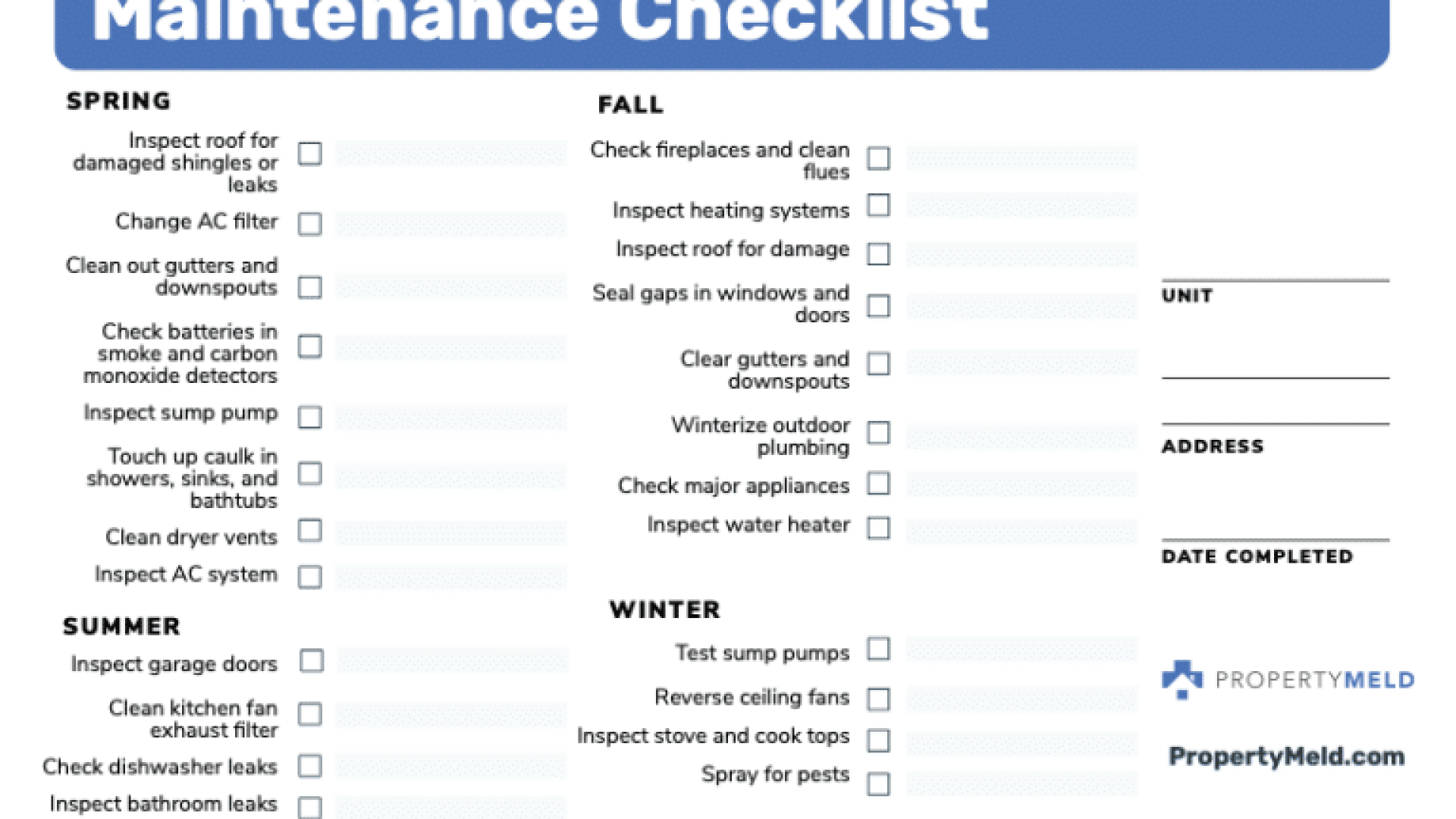In property management, the best way to build trust with your residents is to keep their homes in ideal working condition. At the same time, building trust with your investors stems from taking care of their assets while keeping repair costs low. But how can you meld these two concepts to create a property management business where resident and investor retention is a focus? The answer is simple: build a robust preventative maintenance strategy. Preventive maintenance means regularly inspecting and making regular repairs to eliminate costly maintenance emergencies. Keeping track of preventative maintenance can be challenging without a system in place.
This article delves into the critical aspects of a practical preventive maintenance checklist, the essential tasks to include, factors to consider, and how to automate this process with designated property maintenance software.
What is A Preventative Maintenance Checklist:
A preventative maintenance checklist for rental units is a comprehensive tool designed to systematically address and enhance the upkeep of properties, ensuring they remain in optimal condition. Preventative maintenance is a proactive strategy to identify, address, and prevent potential issues before they escalate, safeguarding both the property’s value and residents’ satisfaction. From routine inspections of plumbing and electrical systems to addressing minor repairs promptly, a well-crafted checklist tailored to rental units can significantly contribute to the overall rental experience while minimizing unforeseen maintenance challenges.
What are the Five Most Important Tasks in a Preventative Maintenance Checklist:
In a preventative maintenance checklist tailored for rental properties, five crucial tasks stand out to ensure the sustained functionality, safety, and overall appeal of the units:
1: HVAC System Inspections and Servicing: Regular assessments of heating, ventilation, and air conditioning (HVAC) systems are crucial. This includes changing air filters, cleaning ducts, and ensuring optimal performance. Proactive maintenance provides a comfortable living environment for residents and eliminates costly HVAC repairs during peak seasons.
2: Plumbing System Checks: Preventing plumbing issues is crucial in avoiding water damage and inconvenience. Periodic inspections of pipes, faucets, and water heaters can identify potential leaks or blockages, allowing for timely repairs. Additionally, addressing minor plumbing concerns promptly can prevent them from escalating into costly repairs.
3: Electrical System Maintenance: Regular checks on the electrical systems are essential for resident safety. This includes inspecting wiring, outlets, and circuit breakers. Addressing issues can prevent electrical hazards and disruptions, creating a secure and reliable living environment.
4: Roof and Gutter Maintenance: A well-maintained roof protects the property from weather-related damage. Regular inspections for leaks, missing shingles, or damaged gutters can prevent water infiltration.
5: Appliance Inspections and Servicing: Rental properties typically come equipped with various appliances. Regular inspections and maintenance of refrigerators, stoves, dishwashers, and other devices ensure they function efficiently. Proactively addressing any issues can prevent unexpected breakdowns and resident dissatisfaction.
Regular and proactive maintenance reduces the likelihood of significant repairs and fosters positive relationships with investors and residents.
What are the 10 Factors to Consider in Performing Preventive Maintenance:
When performing preventive maintenance on rental properties, considering the following ten factors is crucial for a comprehensive and effective strategy:
1: Resident Communication and Scheduling: Establish clear communication channels with residents to schedule maintenance activities conveniently. Coordination ensures minimal disruption to the occupants while addressing maintenance needs promptly.
2: Property Age and Condition: Tailor the maintenance plan based on the age and overall condition of the property. Older properties may require frequent inspections and upgrades to address wear and tear.
3: Local Climate and Weather Conditions: Adapt the maintenance schedule to the local climate. For instance, properties prone to extreme weather conditions may need more frequent inspections for potential weather-related damage.
4: Compliance with Regulations: Stay informed about local regulations and building codes. Ensure that all maintenance activities comply with legal requirements to avoid potential fines and maintain the safety and habitability of the property.
5: Seasonal Maintenance Needs: Adjust the preventive maintenance plan based on seasonal requirements. For example, heating systems may require more attention in the winter, while you may prioritize landscaping and exterior maintenance in the spring and summer.
6: Occupancy Levels and Resident Turnover: Consider the occupancy and resident turnover rates when planning preventative maintenance. Empty units allow more extensive repairs, while occupied units may require more strategic scheduling.
7: Emergency Preparedness: Maintain emergency systems such as fire alarms, sprinklers, and emergency exits to ensure resident safety.
8: Cost and Budget Considerations: Develop a maintenance budget and prioritize tasks based on cost-effectiveness. Addressing minor issues can prevent them from escalating into more expensive repairs in the future.
9: Landscaping and Exterior Maintenance: Maintain the property’s curb appeal by including landscaping and exterior maintenance in the plan. Regularly trim trees, inspect the roof, and address structural issues to preserve the property’s aesthetic value.
10: Documentation and Record Keeping: Keep detailed records of all maintenance activities, including dates, tasks performed, and any repairs made. This documentation is valuable for tracking the property’s maintenance history and can be helpful for future planning and resale.
How Do I Create a Preventive Maintenance Checklist:
Creating a preventive maintenance checklist for your rental properties involves a systematic approach to ensure all essential aspects are covered. Follow these steps to develop an effective preventative maintenance plan:
1: Identify Property Components: List all components of your rental property, including HVAC systems, plumbing, electrical systems, appliances, roofing, and landscaping. This initial inventory will serve as the foundation for your checklist.
2: Prioritize Components: Prioritize the listed components based on criticality and frequency of use. Focus on high-impact areas such as safety systems, heating and cooling, and plumbing.
3: Set Maintenance Intervals: Establish a schedule for each maintenance task. Some tasks may be monthly, quarterly, biannually, or annually. Clearly define the frequency to ensure regular and timely inspections.
4: Delegate Responsibilities: Assign responsibilities for each task. If you manage multiple properties, specify which team member or contractor is responsible for completing each maintenance item.
5: Utilize Technology: Leverage property maintenance software or apps to streamline communication, schedule maintenance tasks, and digitally record completed activities. This helps in tracking and organizing maintenance efforts efficiently.
6: Review and Update: Regularly update your preventive maintenance checklist based on feedback, changing property conditions, and any new equipment installations. This ensures that your plan remains relevant and effective over time.
Download our free preventative maintenance checklist by filling out the form below!
Or, if you're ready to say goodbye to spreadsheets, paper checklists, and sticky notes plastered around the office, schedule a demo to see how our intelligent maintenance software can aid in building a preventative maintenance program that will lower costs and improve owner and resident retention.















